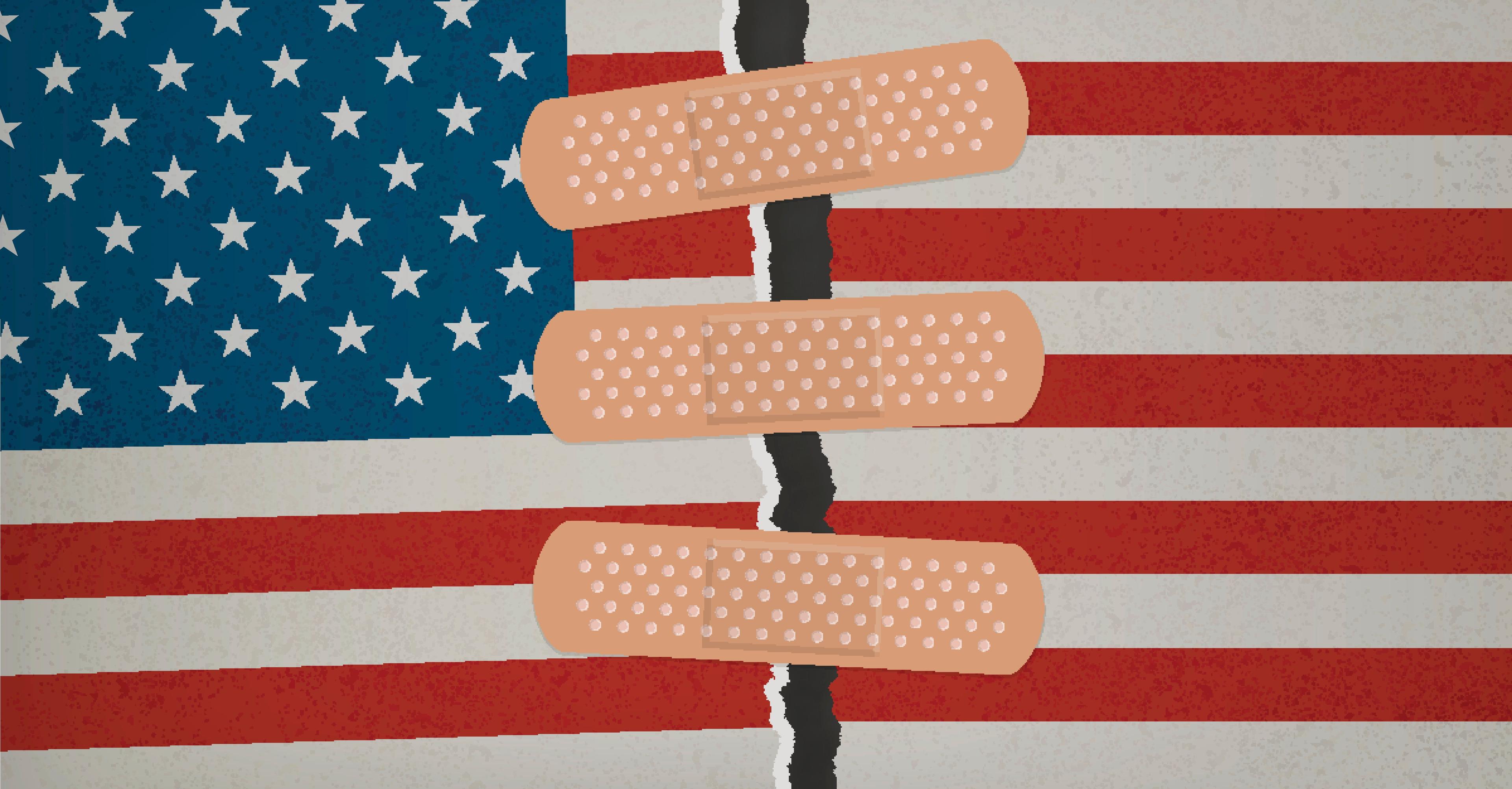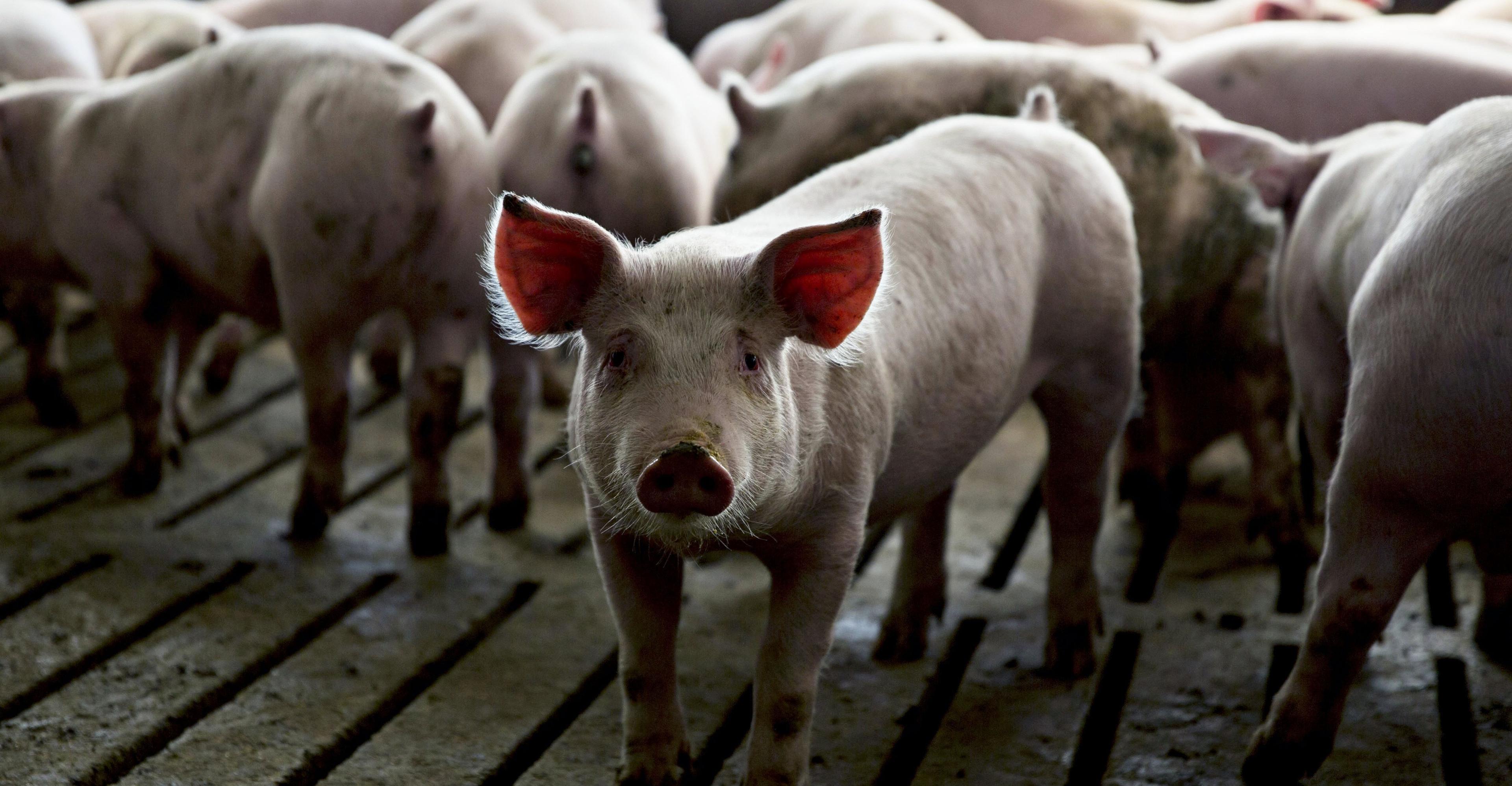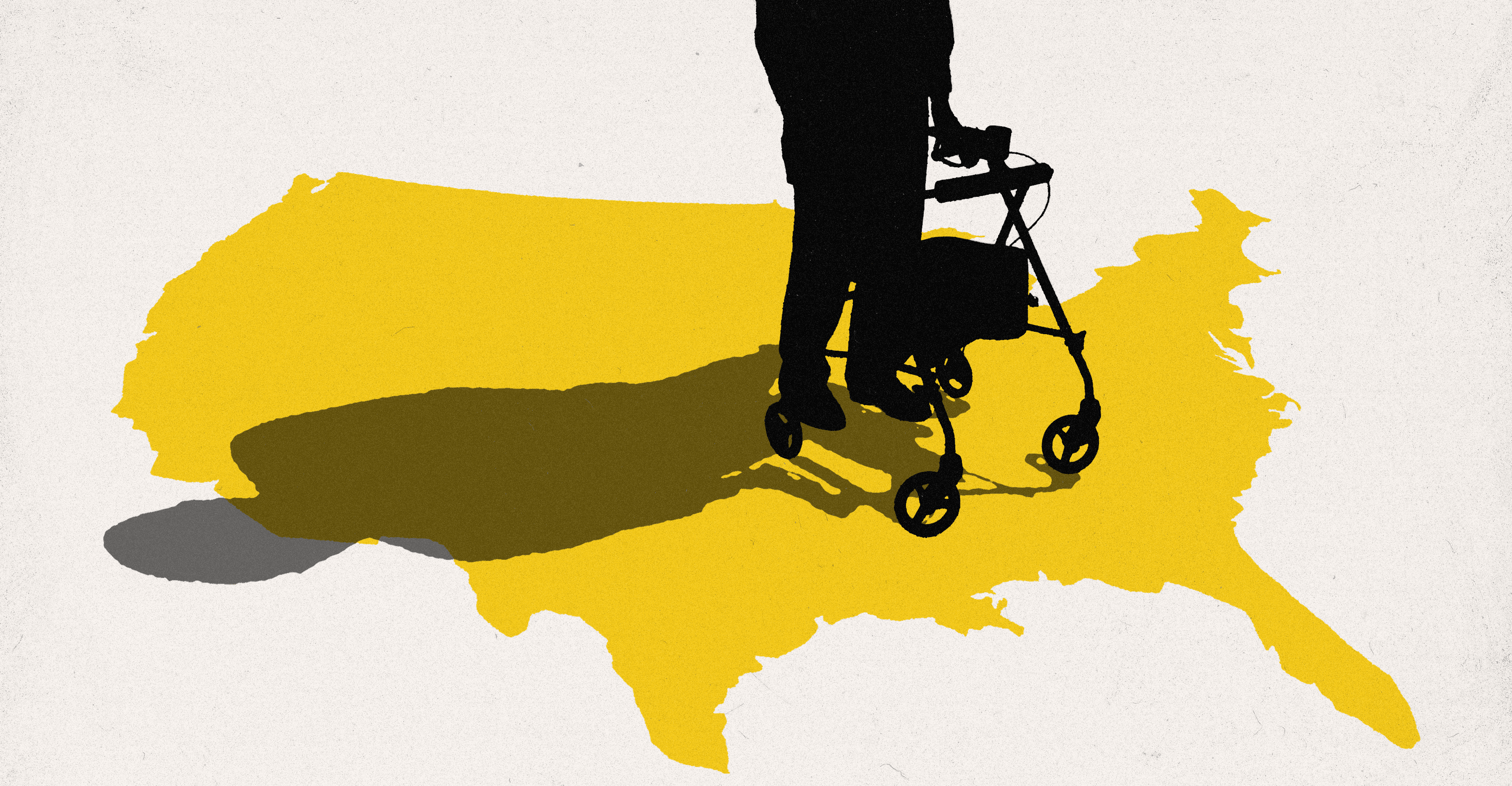Americans don’t move much anymore and Yoni Appelbaum thinks that’s a serious problem. Appelbaum, a historian and deputy executive editor at The Atlantic, is the author of a new book exploring how and why Americans have become less likely to settle in new plac…

Published 10 months ago on Feb 19th 2025, 12:00 pm
By Web Desk

Americans don’t move much anymore and Yoni Appelbaum thinks that’s a serious problem. Appelbaum, a historian and deputy executive editor at The Atlantic, is the author of a new book exploring how and why Americans have become less likely to settle in new places.
In Stuck: How the Privileged and the Propertied Broke the Engine of American Opportunity, he examines in illuminating detail the consequences of this decline in geographic mobility — both for individuals and for the broader political and economic landscape of the US, where the freedom to move to different parts of the country has long shaped the nation’s identity.
I spoke with Appelbaum about mobility acting as a form of social glue, the trade-offs of tenements, and his ideas for getting Americans moving around again. Our conversation has been lightly edited and condensed for clarity.
Your research found that Donald Trump’s strongest support in 2016 came from people who stayed in and around their hometowns, while those who moved away were more likely to back Hillary Clinton. Do you see a connection between staying put and a rightward political drift?
There’s a lot of good social science research to suggest that moving doesn’t just change people’s economic destinies and the prospects of their children, it shifts their whole mindset. Researchers have found that people who relocate to new places are more open to new experiences, they tend to necessarily be more open to diversity, and conceive of the world as a place where there can be win-wins.
People who want to move, and can’t, grow more cynical, more pessimistic, more inclined to see the world as zero-sum. They may also grow more isolated, more set in their ways and habits. I think that a society that ties people down is likely to produce a politics that views change as threatening and diversity as dangerous.
Your book powerfully argues that geographic mobility shaped America’s innovative spirit. But moving often means leaving behind the family, friends, and neighbors who give our lives real meaning. Is there a way to recapture the benefits of mobility without asking people to repeatedly uproot their deepest local ties?
I was surprised as I researched the book to see what a large role mobility had played in shaping the distinctive character of America, not just in terms of economics. Maybe the most surprising thing is what an enormous role it’s played in shaping the vitality of American community. When people relocate, they tend to feel lonely when they first arrive, and respond to that feeling by reaching out, by making connections, by making themselves do uncomfortable things like joining organizations. We often think of mobility as something that dissolves the ties that mean the most to us. In practice, though, in the US, mobility has usually served as a kind of social glue, as the thing which binds us to each other. And if you look at the last 50 years with a really sharp decline in mobility, we have simultaneously seen a really sharp decline in other kinds of social ties. That’s not coincidental.
You also argue that mobility is crucial for the ability of an economy to grow and create new opportunities. Do you think America can remain competitive if more people stay put, or is a higher level of geographic mobility necessary?
In a dynamic economy where firms rise and fall, and sectors boom and decline, it’s essential to get workers to the right places. Unlike a command-and-control economy, where you decide where to put factories and how many people to employ, market economies require high labor mobility to match workers with new opportunities. Without this, you’ll have factories closing and workers losing jobs while new opportunities arise elsewhere, but not for those displaced workers. That’s been the issue in recent decades.
The second aspect is personal. It’s hard to leave a bad job because it’s still a job, and switching industries or taking risks is tough. We know sharp interventions help people break habits, and physical relocation resets habits. If you leave a declining industry and move to a new town, you’ll likely take a job in a growing sector, speeding up the [economic] transition.
Your book makes a compelling case that local zoning restrictions have created barriers to geographic mobility by making housing so scarce and unaffordable. Yet journalist Phil Longman points to the late 1970s federal retreat from regulating transportation, enforcing antitrust, and investing in infrastructure as the turning points that made mobility more difficult. How do you see broader policy shifts interacting with local zoning to keep people “stuck” today?
If you look to the American South, for half a century after the Civil War, people didn’t leave in large numbers, because they were not welcome in the North. When immigration halted in World War I, you then got the Great Migration, as people fled north to take available jobs — something like 20 million white Southerners and 8 million Black Southerners moved north over the 20th century. Today we’re seeing a flow back toward the South, where cities are now growing faster.
What’s different about the current flow is that people are often migrating to places where housing is cheap, rather than where jobs pay well. This marks a sharp departure from the past. For 200 years, the poorest and richest places in America were converging. It plateaued in the ’70s and ’80s, then started widening again this century. The reason: For 200 years, moving from a poor place to a rich place meant ending up ahead because earning gains outstripped living costs. For most Americans now, that’s not true anymore. Local housing regulations mean moving to richer places costs more in housing than they gain in income, leaving them behind.
Let’s talk more about this link between affordable housing and mobility. You note that while 19th- and early 20th-century tenements had real problems, many residents weren’t actually unhappy or feeling degraded by their living situations. When I wrote about converting vacant offices into adult dorm-style SROs last year, some progressives criticized it as undignifying, especially the idea of sharing bathrooms. Do you see parallels between these older housing reform movements and today’s resistance to certain affordable housing models? How do we balance housing quality concerns with the risk that imposing middle-class preferences might harm those we’re trying to help?
Tenements were really surprising to me. I thought I knew the story of tenements: that it was greedy landlords exploiting vulnerable immigrants and making them live in really horrifying conditions. But for most immigrants, tenements were a temporary housing solution that enabled them to come to a country with better prospects to find jobs, to care for their families and to move up.
Housing reformers tended to highlight the very worst examples of tenements they could find, but the more comprehensive government reports which looked at the overall quality of the housing stock found that most tenements were well-maintained, clean, and worked well for their inhabitants. The great fear is usually that these housing conditions will become permanent. You can hear that in today’s housing debates, too. You don’t want anyone to be stuck. You don’t want somebody to be housed in a way that’s not them making a conscious trade-off but rather a blighted condition that’s being imposed on them from which they can’t escape.
But in our zeal to eliminate these problems, I think reformers have often looked at difficult housing conditions and concluded that the problem is the building code, when the problem is almost invariably poverty. The alternative to less-than-ideal housing that society seems to have hit upon is homelessness, which from the perspective of somebody who’s offered to move off the streets and into an SRO is usually a much worse option. If you give people back the agency to choose what housing conditions they’d like to accept as they try to climb a ladder towards security, I think you get a really different set of decisions than if those decisions are being made in the abstract by reformers.
Your book highlights this remarkable moment from 1913: Housing reformer Lawrence Veiller admitted that Americans liked apartments and would never vote to ban them. So he recommended that regulators find ways to “penalize” apartments through indirect means, like stricter building codes — including fire safety rules as he had done in New York City. Do you think these regulations not only restricted housing options but also reshaped Americans’ preferences over time?
Yeah, and as we see today, as restrictions tend to target certain kinds of housing, including multifamily housing, often that housing tends to become associated with undesirable populations. It’s easier to say, “I don’t want an apartment building,” than to say, “I don’t want immigrants in my neighborhood.” So I think that the stigmatization of certain kinds of housing has shaped American preferences. There are a lot of people who just prefer to live in a single-family home, and that’s fine. They should have that choice. What strikes me as peculiar is somebody who prefers a single-family home and doesn’t think anyone else should have the choice to prefer something else.
Your book joins an important body of work, including Marc Dunkelman’s Why Nothing Works and Paul Sabin’s Public Citizens, both of which explore how a new wave of progressive activism emerged in the latter half of the 20th century, fostering a more adversarial relationship with government and expertise. As a journalist covering housing and other social issues today, I’m struck by how this history complicates our role — we need to expose problems and hold power accountable, but our industry’s more adversarial pivot may have also contributed to the erosion of trust and tolerance needed for sustaining support for collective pluralistic solutions. How do you navigate these tensions as a journalist and a scholar?
As a writer, I aimed to tell the story as accurately as possible, and followed where that led. But looking back, I see that deep suspicion of institutions led in an unexpected direction. The belief that government doesn’t act in the public interest and must be challenged by citizen activists and journalists took hold in progressive circles for good reason — the government often wasn’t acting in the public interest. But many of the self-appointed guardians weren’t either. We replaced a flawed system with one that made it nearly impossible to get anything done.
At first, activists saw this new environment as a victory; they stopped and could stop many of the bad things they had observed. However, over time, we’ve accumulated a growing deficit of things that need to be done, built, and changed, and it’s become harder and harder to implement any of it.
Our institutions, including journalism, are good at exposing abuses of power but not very good at addressing inaction or missed opportunities. As Marc Dunkelman suggests in his book, we need a rebalancing. If in the end, what you do is reduce every bureaucrat to a defensive crouch, if people decide that the safe option is not acting rather than trying to make something a little bit better, that’s got big institutional consequences. I don’t have a good answer for that.
You suggest that if we can’t restore geographic mobility, we might need to redesign our welfare system around a more static population. How do you see the relationship between these two challenges — restoring mobility and providing welfare?
If you have a society that has an operating assumption that people are going to stay where they’re born, then you need to have a really strong form of redistribution, because the gains are not going to be matched terribly well to the population. You’ll need to plan to take the gains from the regions of your country which are doing really well, from folks who are doing really well, and redistribute them to the people who are not doing as well. And you see that in many European social welfare states — that’s the underlying logic. It comes with some real costs, including, typically very high unemployment in some places, intergenerational poverty and a lack of agency, but it is a solution to the problem of that mismatch.
America has typically had a very different solution, which is that, instead of providing a really robust social safety net that redistributes income to allow people to remain where they are, we favored engineering a society that maximizes individual agency, and allows people to take their futures into their own hands and go where they want. When that works it yields a set of outcomes that people seem to prefer, which is one reason why, for most of American history, we’ve had a very large net inflow of immigrants.
What we have right now in America is a society that is increasingly marrying European levels of stasis to American levels of social welfare policy, and that is the worst of both worlds. We’re not helping people go where the opportunities are and we don’t help them where they’re living either. And that strikes me as dangerous and unsustainable and also inhumane. And so it’s a real choice that America faces at this moment to decide which of those two models it wants to pursue.
Japan lifts tsunami warning after 6.7-magnitude earthquake
- 21 hours ago

3 theories that explain Trump’s collapsing support
- 9 hours ago
Pakistan win Under-19 Women T20 series
- 20 hours ago

Donald Trump reminds the entire world he has no idea what 6G means
- 11 hours ago
Cold, partly cloudy weather expected over most parts of country
- 21 hours ago

Blame Republicans for our health insurance mess
- 9 hours ago

The Vergecast 2025 year in review
- 11 hours ago

You can now text photos directly to Aura’s digital picture frames
- 11 hours ago

I’m obsessed with Redfin’s AI search
- 11 hours ago
Taylor Swift breaks down in Eras documentary over Southport attack
- 18 hours ago

The alarming rise in antibiotic use by the meat industry
- 9 hours ago

The Kennedy Center Honors continue Trump’s vengeance on liberal Hollywood
- 9 hours ago
You May Like
Trending









